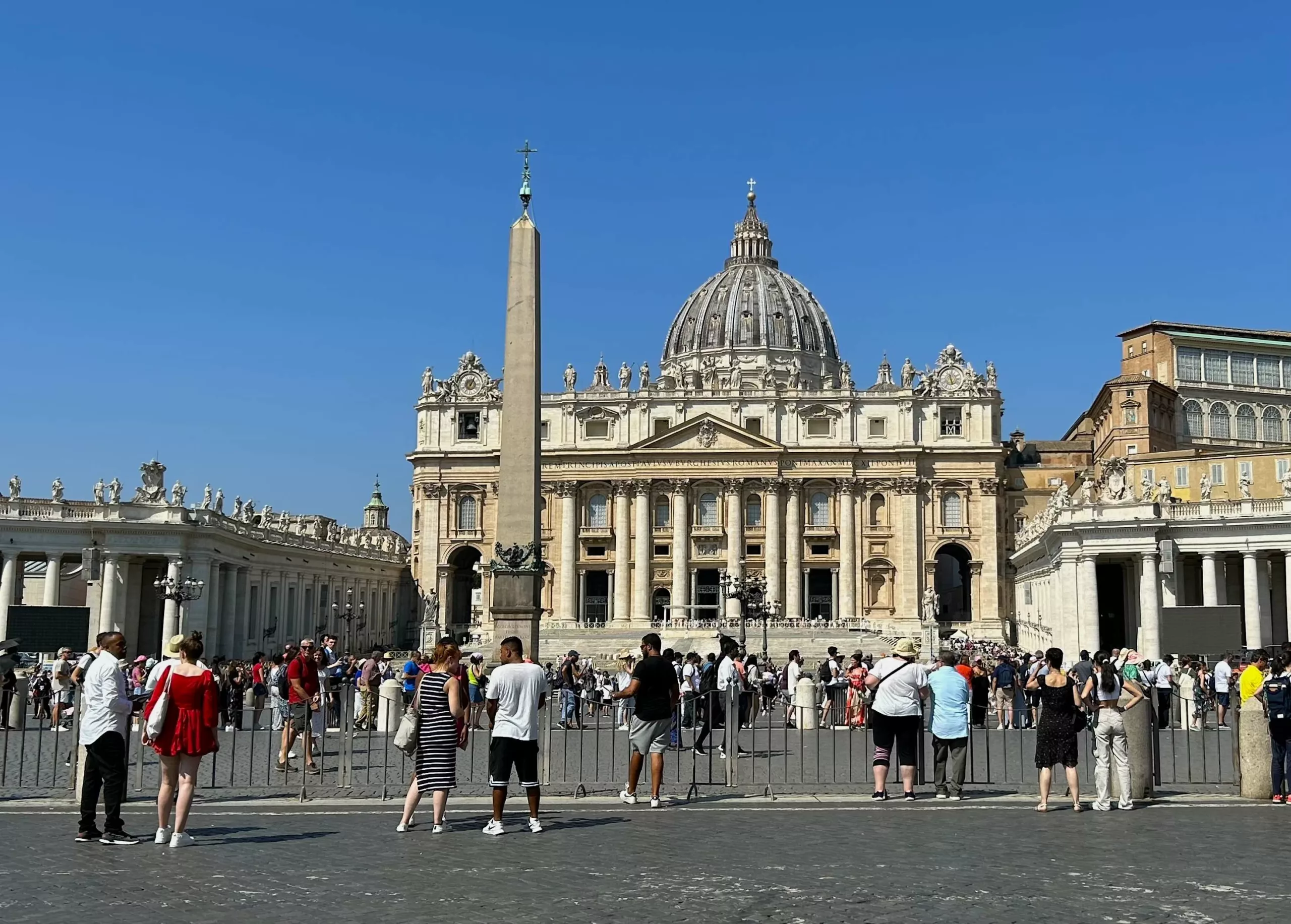
28 Sep The obelisk in Saint Peter’s Square
Saint Peter’s Square, located in the heart of Vatican City, is one of the most iconic and visited places in the world. At the center of the square stands a remarkable monument that has captured the imagination of millions of visitors, the obelisk of Saint Peter’s Square.
The origins of the obelisk
The obelisk of Saint Peter’s Square, also known as “The Vatican obelisk,” has a fascinating history that spans thousands of years. Its journey begins as a tribute to the sun god Ra in ancient Egypt, where it was quarried in the famous red granite quarries of Aswan. Not much is known about the original location in ancient Egypt of this particular obelisk.
What is more certain is that the obelisk was transported from Alexandria to Rome during the reign of Emperor Caligula, around 37 AD. This colossal feat of engineering involved the use of a massive ship to carry the obelisk across the Mediterranean Sea. In order to avoid damage during transportation, the obelisk was loaded on the ship together with 1000 tons of lentils. Finally, the ship was filled with volcanic ash and scuttled to become the base of a lighthouse at the port of Rome.
The arrival in Rome
Upon its arrival in Rome, the obelisk was erected in the middle of the Circus of Caligula and Nero. The circus was an ancient chariot racing stadium, originally on the left-hand side of the current Saint Peter’s Basilica. It remained there for centuries, witnessing numerous events and historical changes, including the rise of Christianity. Centuries later, Pope Sixtus V in 1586 had the obelisk moved to its current location. The renowned architect Domenico Fontana will undertake in one year with 900 men and 75 horses.
The legend
As the obelisks are connected to the sun god Ra, the pope performed an exorcism ritual and then ordered a cross to be placed on top. It was under these circumstances that a famous story about the obelisk proved to be just a legend. When first brought to Rome, a golden orb topped the obelisk. According to popular tradition, the orb held the ashes of Julius Caesar. However, when it was opened, there was only dust. The orb will be then moved from Saint Peter’s Square to the Capitoline Museums.
You can visit Saint Peter’s Basilica and Saint Peter’s Square on my Vatican Tour which includes the Sistine Chapel and the Highlights of the Vatican Museums
https://www.seeromewithme.com/vatican-museums-sistine-chapel-st-peters-basilica/Saint Peter’s Square is always open. As for the Basilica of Saint Peter’s, opening hours and mass hours, please check this link:
https://www.basilicasanpietro.va/en/info-and-opening-hours.html

